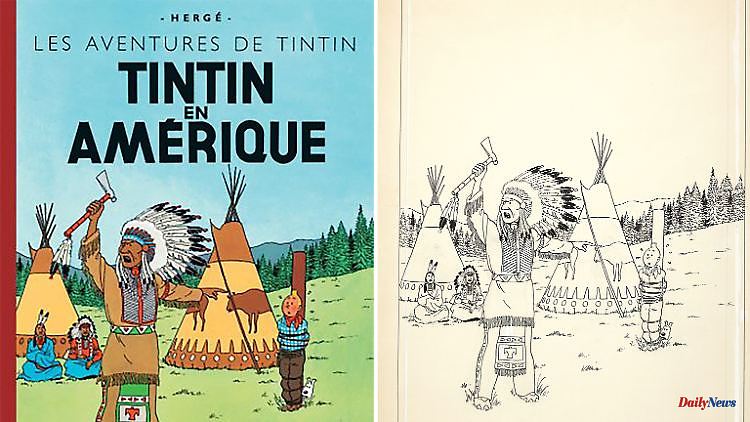An unknown buyer digs deep into his pocket for the cover of the world-famous comic "Tintin and Struppi in America". He pays 2.16 million euros for the original drawing of Hergé in black and white. The 1942 drawing is so valuable for a reason.
A record sum of around 2.16 million euros was achieved at the auction of a drawing by comic artist Hergé in Paris. The title page for the comic strip "Tim and Struppi in America" set a "world record for an original drawing by Hergé in black and white," said the auction house Artcurial when the proceeds were announced. The drawing is considered particularly valuable due to its unusually large dimensions of 52.3 by 36 centimeters.
It shows the young Belgian reporter Tim, who is tied to a torture stake with his forehead quiff. Only the head of Struppi, his fox terrier, is crouched behind him. In the background are two tipi tents and two other Native Americans with feather headdresses.
It has not been announced who the new happy owner of this extraordinary piece is. The seller wished to remain anonymous; the auction house only stated that it was a Belgian collector.
"Tintin in America" was the third volume in the comic series, initially published in black and white in 1932. In 1946 the album was released in a colored and textually revised version. In the 1970s, at the request of US publishers, Hergé exchanged two African American characters for two white characters.
Strictly speaking, the drawing auctioned on Friday is not the original cover of Tintin in America, but Hergé's 1942 redesign - which also served as the basis for the 1946 world-famous version of the title cover.
Similar to the previous volume "Tim und Struppi im Kongo", author Hergé reproduces the stereotypes of his time: both Africans and Indians, as indigenous people were then generally called, appear in the comic series as naive and uncontrolled. The chief bears the unflattering name "Mole-with-the-Eagle-Eyes". In Canada, the volume was banned from some bookstores a few years ago because of its clichéd portrayal.
Belgian draftsman Hergé - who reversed the initials of his name Georges Remi for his stage name - has become known for his style of clean lines. Similar to a child's drawing, the scene manages without shadows or plastic elements.
In January 2021, a drawing by Hergé from 1926 for the title of the volume "The Blue Lotus" changed hands for 3.2 million euros. Drawings for the volume "Steps on the Moon" achieved around 1.55 million euros in 2016.












